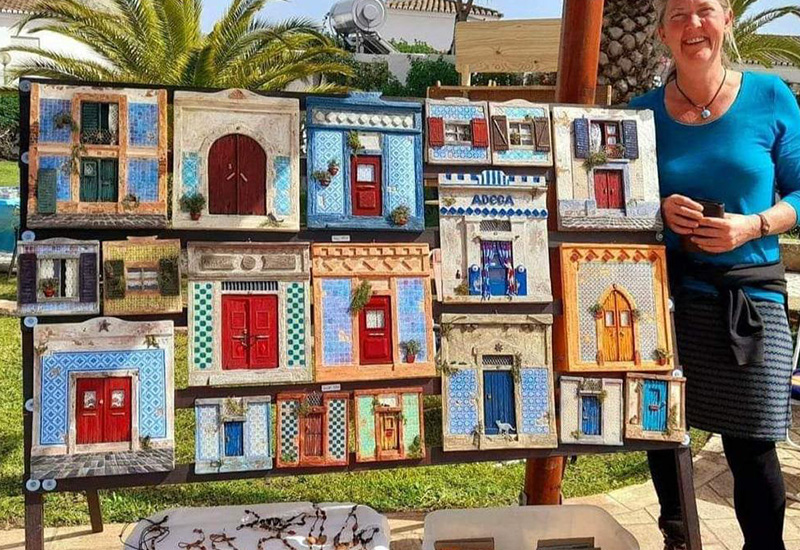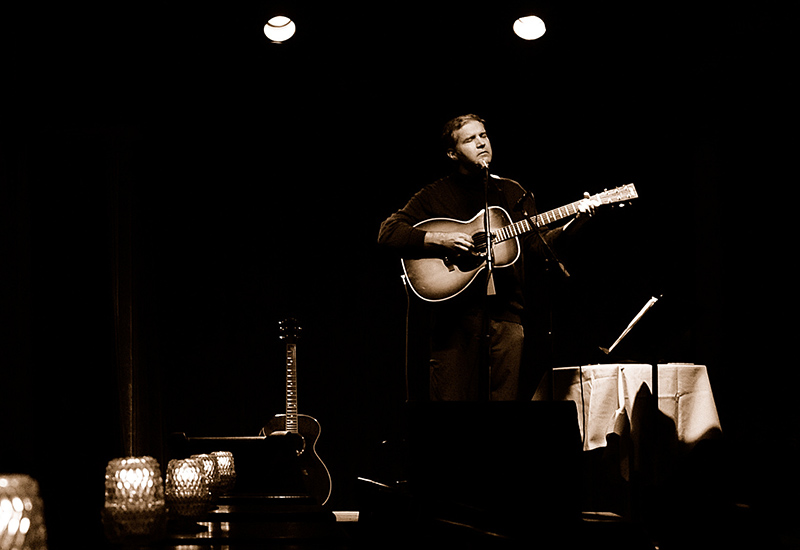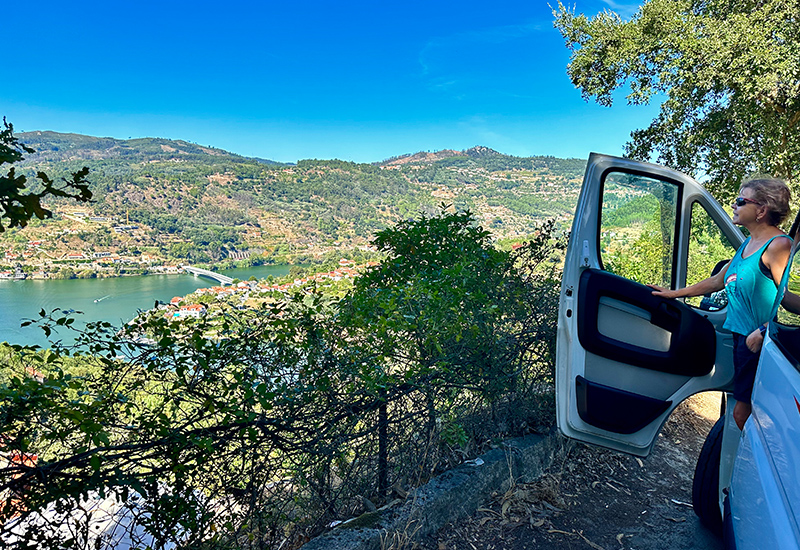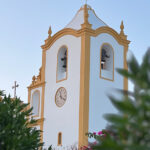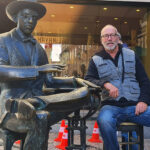Cracked plaster, chipped paint and sunbleached wood do not usually constitute something so eye-catching. Yet, when combined in the form of a Portuguese door, these imperfections transform into an iconic feature that resonates with tourists, locals and artists, including Birgit Stegmaier.
When Birgit came to Portugal ten years ago, she says, “I knew from the first moment that my journey was over. It was like coming home.” She started travelling in 2010, ‘WWOOF-ing’ (Worldwide Opportunities on Organic Farms) her way through Europe. As she was about to settle in Spain, she thought she must check out Portugal first and she realised “as soon as I crossed the border, there was no going back for me.”
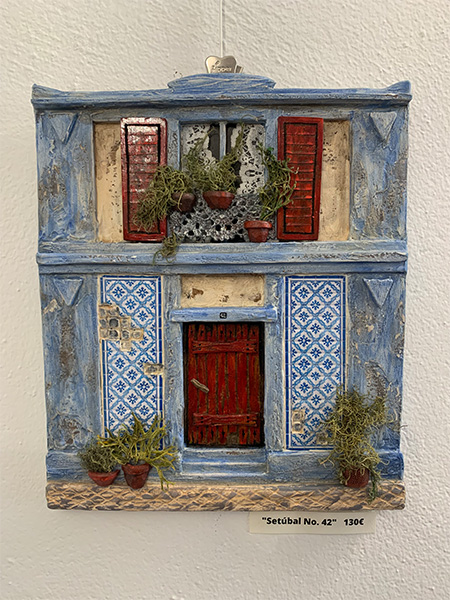
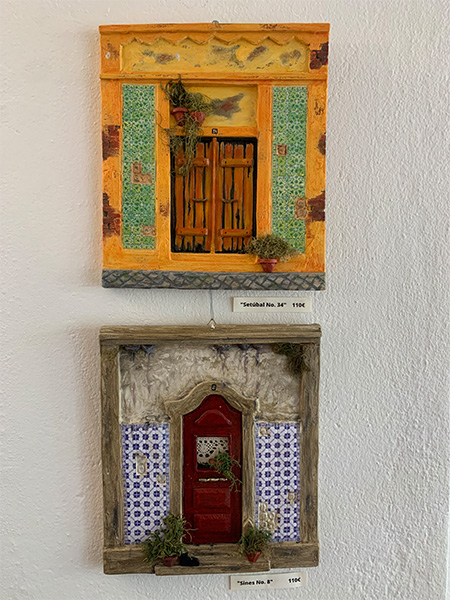
Originally from Germany, Birgit has always been creative, though she had never been paid for her art. Before setting off on her travels, she decided to pursue a university degree in Interior Architecture. However, she didn’t like the idea of being “chained to a computer”, so she pursued her dream to travel and “figure the rest out later”. Even though she is technically licensed to build a two-story house, the facades she makes today could fit in her bag!
For the first six years of her travels here, she sketched her way through Portugal’s charming towns and villages. She found inspiration from the traditional tiles (azulejos) and the crumbling, decayed facades. From these sketches, she started to create miniature, three-dimensional Portuguese houses by hand from the comfort of her “travelling studio”.
For four years now, Birgit has finally settled in her “little paradise” on the west side of Fóia in the Serra de Monchique. Her van is nestled 650 metres high, with a breathtaking view over the “blue hobbit-hills” from Lagos to Sagres and the Atlantic beyond.
She chose to create the structures on something light and locally sourced. Cork, being Portugal’s largest export, was an obvious choice as it’s sustainable and perfect for people wanting to take a little piece of Portugal home. She also picks lichen from the surrounding trees of her caravan studio to mimic the plants that grow between the cracks of these old buildings.
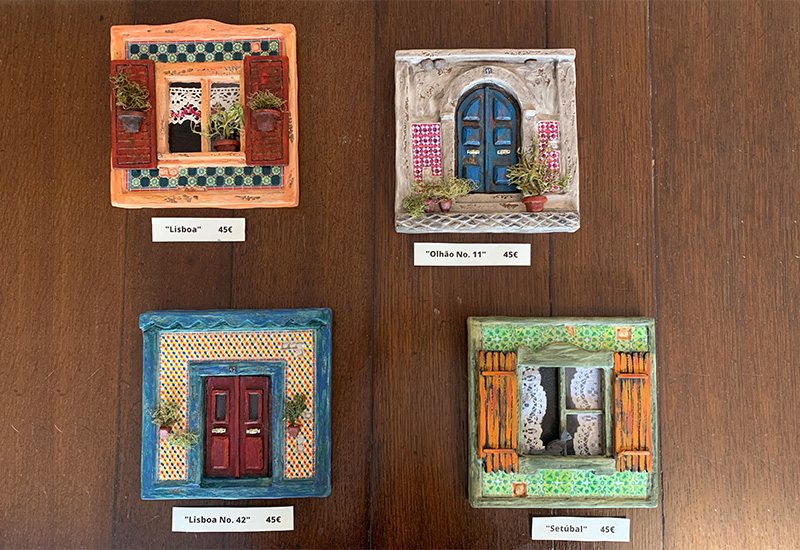
Birgit then delicately paints each azulejo, a form of Spanish and Portuguese painted, tin-glazed ceramic tilework. They’re usually found on the interior or exterior of churches, palaces, ordinary houses and schools and are also becoming popular in modern buildings. They are an ornamental art form but were used initially as temperature control in homes.
Currently, her work is featured in an exhibition in Luz Cultura, a community centre for art and music in Praia da Luz. However, you can also buy her unique, one-of-a-kind pieces in a number of gift shops across the Algarve, like Tamar in Lagos and Atelier 8550 in Monchique as well as in Lisbon and other Algarvian craft markets. This month you can see Birgit’s creations at the Spring Craft Fair on the 1 April, held at Hostel Lis Flower Cafe in Almádena.
